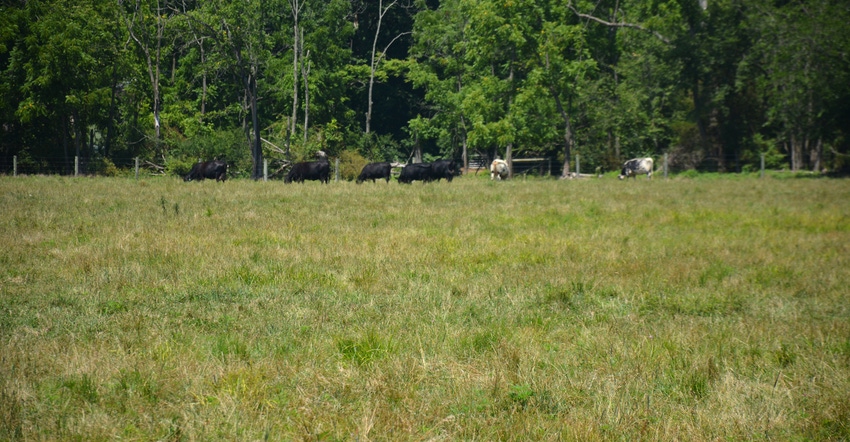July 20, 2022

Many grazers and agricultural professionals will refer to the hot, dry part of summer as the summer slump.
This is when cool-season grasses slow in growth or essentially go dormant. The optimum temperature for cool-season grasses is between 60 and 80 degrees F. Anything over this range and growth dramatically declines.
Since regrowth slows during this period, it is critical to avoid grazing too low during this time of year. If you ignore this, serious soil degradation, nutrient loss and weed invasion will usually result.
Here are five tips to encourage regrowth and promote stand health:
1. Maintain 3 to 4 inches. This is the general rule of thumb for grazing, but it is especially important during this time of year.
Aboveground biomass is important to grazing systems because what you see aboveground is reflected below. Research has shown that if grass is grazed very short repeatedly, the root system dies back significantly and the stand declines. This is critical during summer as grasses try to scavenge for limited water sources.
Most problematic pasture weeds have taproots, which makes them excellent water scavengers because that taproot grows deeper than the fibrous roots of grasses.
2. Avoid continuous grazing. Research shows that grazing too short during the summer slump results in increased weed populations and exposed soil, which results in increased soil erosion and nutrient runoff.
Further, soil health degrades because it depends in great degree on vigorous root systems.
Tall, thick forage stands can help protect crowns and tillers from freezing. These kinds of stands can also shade them from high temperatures. If grazed too low, tillers could be exposed to temperatures as high as 95 degrees. Those high temperatures could cause tillers to die and result in thin stands.
3. Implement rotational grazing. Grasses need that 3-4 inches of stem left behind so that they can use the excess nutrients stored there and grow new leaves. Once there is enough leaf material, they can photosynthesize more efficiently and begin storing extra energy before the next grazing cycle.
If the grasses are grazed too short, they will use up all their stored nutrients to grow new leaves, but they won’t have enough energy left over to maintain a dense root system so the roots will die off.
Implementing a rotational grazing system is one of the best ways to maintain sufficient grass height. Separate a large pasture into smaller sections with permanent or temporary fencing, and rotate animals out when grasses reach that 3- to 4-inch height. They can then be rotated back into an already-grazed paddock when forage height reaches 6 to 8 inches or higher.
4. Try warm-season plants. To supply summer forage, it is ideal to have a portion of the farm in warm-season annuals or perennials. These forages are adapted to high temperatures and dry soils.
Examples are millets, sudan and sorghum sudangrass, teff, sunn hemp, cowpea, forage soybean, switchgrass, big bluestem, indiangrass, etc. If you only have cool-season pastures, bringing animals into a drylot and feeding hay for a few weeks can allow the grasses to regrow, which will help to increase stand longevity and reduce the need to reseed a stand that has become thin from overgrazing.
5. Set aside a sacrifice lot. If a drylot isn’t an option, consider using a section of pasture that is in poor condition and needs some tender-loving care as a sacrifice lot. The extra nutrients provided from the animals and imported hay material can supply nutrients and, if necessary, the pasture can be reseeded in the fall once the animals are removed. Be sure to use an area with adequate fencing, whether it is permanent or temporary, as animals will be prone to push fence and try to get to "greener" pasture.
It is also important to ensure the area is an adequate distance from surface and groundwater. Consult your local conservation district as to any local runoff and erosion regulations.
Duiker is professor of soil management and applied soil physics at Penn State. Brackenrich and Duppstadt are Extension educators of field and forage crops.
You May Also Like




